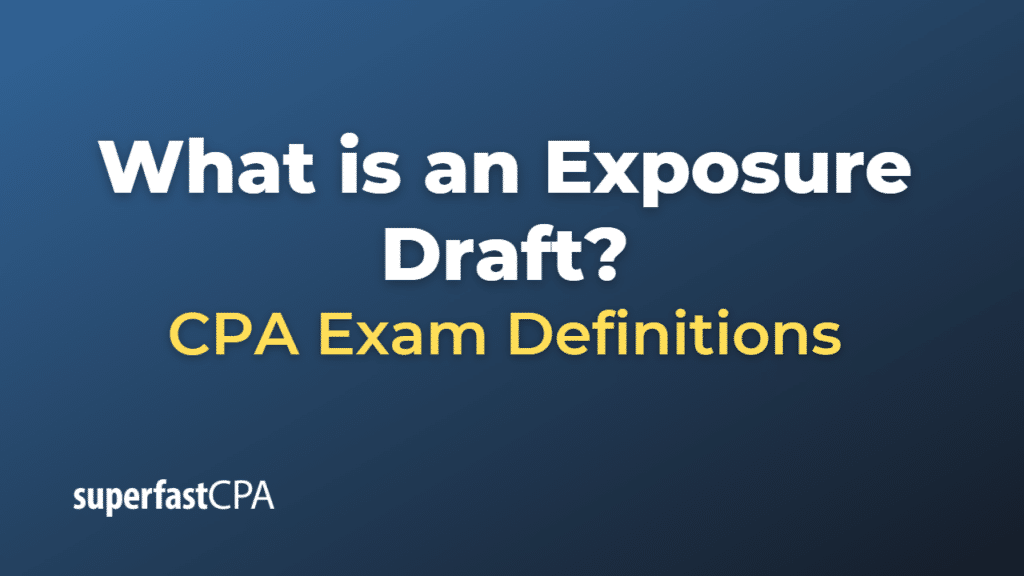Exposure Draft
An exposure draft is a document issued by the Financial Accounting Standards Board (FASB) or the International Accounting Standards Board (IASB), or other similar regulatory bodies, as part of their process of developing and implementing new standards and regulations.
It presents proposed changes to accounting standards and provides a detailed explanation of the issues involved, the proposed changes, and the reasoning behind these changes.
The exposure draft is then open for public comment for a specified period of time. Accountants, auditors, business managers, investors, and other stakeholders are all invited to review the exposure draft and provide feedback on the proposed changes.
This process allows for a wide range of perspectives to be considered and helps ensure the final standards are both practical and beneficial for all stakeholders.
The feedback received is then reviewed by the relevant accounting standards body, and amendments may be made to the proposed changes based on this feedback. Once the review and amendment process is complete, the final standard is issued.
Therefore, the exposure draft serves as an essential step in creating and modifying accounting standards, ensuring transparency and participation in the process.
Example of an Exposure Draft
Let’s say the International Accounting Standards Board (IASB) has identified a need to update the accounting standard for leases, known as IFRS 16. This could be due to changes in business practices, feedback from stakeholders, or new regulatory requirements.
In response, the IASB prepares an exposure draft. This draft outlines the proposed changes to the lease accounting standard, such as a new method for calculating the value of lease liabilities, and the reasons for these changes, such as increasing transparency or aligning the standard with new regulations.
The exposure draft is then released to the public for comment. This allows accountants, auditors, business managers, and other interested parties to review the proposed changes and provide their feedback. They might provide insights on the practicality of the changes, potential unintended consequences, or suggestions for alternative approaches.
Once the comment period closes, the IASB reviews all the feedback received. They might decide to proceed with the changes as proposed, make amendments based on the feedback, or even discard the proposed changes entirely.
Once the review process is complete, the IASB issues the final updated IFRS 16. This standard includes all the approved changes and replaces the previous version of IFRS 16. All entities that report under IFRS are then required to implement and adhere to the updated standard.
Thus, the exposure draft played a crucial role in the process of updating the accounting standard, ensuring that a wide range of perspectives were considered and that the final standard is both practical and beneficial for stakeholders.













